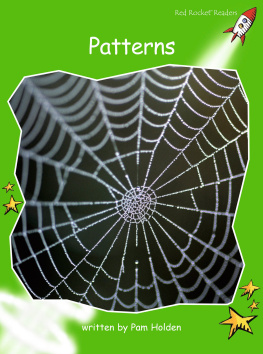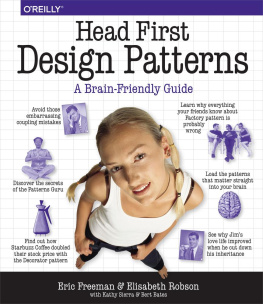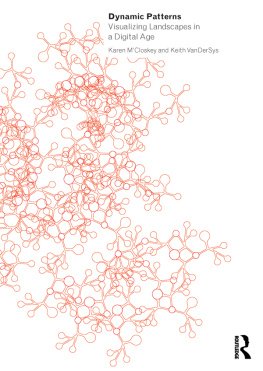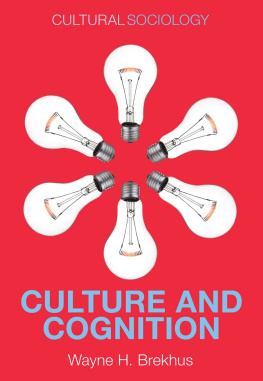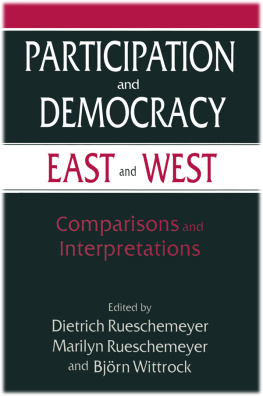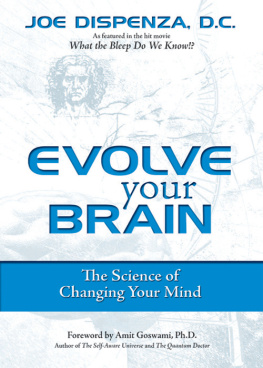
CULTURAL
PATTERNS AND
NEUROCOGNITIVE
CIRCUITS II
EastWest Connections
Exploring Complexity
Series Editors: Jan Wouter Vasbinder
Director, Para Limes
Nanyang Technological University
Helena Hong Gao
Nanyang Technological University
Editorial Board Members:
W. Brian Arthur, Santa Fe Institute
Robert Axtell, George Mason University
John Steve Lansing, Nanyang Technological University
Stefan Thurner, Medical University of Vienna
Geoffrey B. West, Santa Fe Institute
For four centuries our sciences have progressed by looking at its objects of study in a reductionist manner. In contrast complexity science, that has been evolving during the last 3040 years, seeks to look at its objects of study from the bottom up, seeing them as systems of interacting elements that form, change, and evolve over time. Complexity therefore is not so much a subject of research as a way of looking at systems. It is inherently interdisciplinary, meaning that it gets its problems from the real non-disciplinary world and its energy and ideas from all fields of science, at the same time affecting each of these fields.
The purpose of this series on complexity science is to provide insights in the development of the science and its applications, the contexts within which it evolved and evolves, the main players in the field and the influence it has on other sciences.
| Volume 5: | Cultural Patterns and Neurocognitive Circuits II:
EastWest Connections
edited by Balzs Gulys & Jan Wouter Vasbinder |
| Volume 4: | Selected Papers of John H. Holland:
A Pioneer in Complexity Science
edited by Jan Wouter Vasbinder & Helena Hong Gao |
| Volume 3: | 43 Visions for Complexity
edited by Stefan Thurner |
| Volume 2: | Cultural Patterns and Neurocognitive Circuits:
EastWest Connections
edited by Jan Wouter Vasbinder & Balzs Gulys |
| Volume 1: | Aha.... That is Interesting!
John Holland, 85 Years Young
edited by Jan Wouter Vasbinder |
CULTURAL
PATTERNS AND
NEUROCOGNITIVE
CIRCUITS II
EastWest Connections
Editors
Jan W. Vasbinder
Balzs Gulys
NTU, Singapore
Published by
World Scientific Publishing Co. Pte. Ltd.
5 Toh Tuck Link, Singapore 596224
USA office: 27 Warren Street, Suite 401-402, Hackensack, NJ 07601
UK office: 57 Shelton Street, Covent Garden, London WC2H 9HE
British Library Cataloguing-in-Publication Data
A catalogue record for this book is available from the British Library.
Exploring Complexity Vol. 5
CULTURAL PATTERNS AND NEUROCOGNITIVE CIRCUITS II
EastWest Connections
Copyright 2018 by World Scientific Publishing Co. Pte. Ltd.
All rights reserved. This book, or parts thereof, may not be reproduced in any form or by any means, electronic or mechanical, including photocopying, recording or any information storage and retrieval system now known or to be invented, without written permission from the publisher.
For photocopying of material in this volume, please pay a copying fee through the Copyright Clearance Center, Inc., 222 Rosewood Drive, Danvers, MA 01923, USA. In this case permission to photocopy is not required from the publisher.
ISBN 978-981-3230-47-7
For any available supplementary material, please visit
http://www.worldscientific.com/worldscibooks/10.1142/10719#t=suppl
Printed in Singapore
Preface
Our age is characterised by global access to information, places and cultures: we can gain more and more knowledge about the others: other people, other cultures by indirect knowledge: learning about them via the global information net assisted by electronic and other high-tech communication channels, as well as by direct knowledge: personally visiting various parts of the world and meeting the locals in their own natural and social environments.
East and West, two major worlds of aspirations, cultures, world-views, theoretical and practical approaches to life and death, have come closer and closer to each other by personally experiencing more and more of the East by Westerners and the West by Easterners. But do we really understand the similarities and differences between the cultural-cognitive-behavioural-emotional patterns of the East and the West, with special regard to their neurobiological underpinnings in the human brain?
The present book is the second in a series initiated by the Para Limes at Nanyang Technological University, Singapore. Para Limes @ NTU is dedicated to exploring complexity by going beyond the boundaries of disciplines, cultures and institutions. In this spirit, it has initiated a series of exploratory workshops by world-class neuroscientists, philosophers, researchers in the fields of humanities and social sciences men and women of practice to explore various aspects of a good life, including its cultural, neurocognitive and emotional aspects using both the Eastern and Western perspectives.
This book contains lectures by participants of the second and third workshops of the aforementioned exploratory series. The chapters focus on cultural patterns and cognitive patterns in the East and West, with special regard to those patterns which are determined by our natural-genetic endowments in contrast to those patterns which are influenced by our cultural (East-West) influences, and within this context a unique flavour is given to the life worth living aspects.
Jan Vasbinder and Balzs Gulys
Contents
J. Vasbinder and B. Gulys
Sydney Brenner
Neuronal circuits
Guy A. Orban
Ernst Pppel and Yan Bao
Emergence of higher cognitive functions
Giacomo Rizzolatti
Atsushi Iriki and Kevin W. McCairn
Wolf Singer
Highest cognitive functions
Yan Bao and Ernst Pppel
Helena Hong Gao
Kerry Lee and Pirjo Aunio
Jean Decety
Introduction
Sydney Brenner
I want to make a few remarks about the nervous system in general, and why I think, in particular, that the human nervous system, the human brain is going to be not only the most important area of biological research for the foreseeable future but, also, why the human brain underpins most of what has evolved by that species that has occupied the world.
One of the interesting things about evolution is that for any given step, there is a limit to what organism can do. This limit may be set in very simple organisms like bacteria by just providing them enough materials in their environment to obtain just enough energy and to obtain the chemicals for their future growth. As we can see throughout the evolution of species, when we consider very simple micro-organisms to more complex cells, to groups of cells, to metazoa right up to the animals themselves, at each stage of complexity, during evolution, the increase always seems to reach a limit. And then organisms resort to other means in order to achieve very productive fitness and to survive. If you look at the process from this point of view, then you can begin to understand why animals travel in herds, why in the animal world interaction between individuals becomes very important in order to ensure their survival, and why we have the elements of social organization, especially for the social species.


